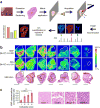A Review of Moxifloxacin for the Treatment of Drug-Susceptible Tuberculosis
- PMID: 28741299
- PMCID: PMC5663285
- DOI: 10.1002/jcph.968
A Review of Moxifloxacin for the Treatment of Drug-Susceptible Tuberculosis
Abstract
Moxifloxacin, an 8-methoxy quinolone, is an important drug in the treatment of multidrug-resistant tuberculosis and is being investigated in novel drug regimens with pretomanid, bedaquiline, and pyrazinamide, or rifapentine, for the treatment of drug-susceptible tuberculosis. Early results of these studies are promising. Although current evidence does not support the use of moxifloxacin in treatment-shortening regimens for drug-susceptible tuberculosis, it may be recommended in patients unable to tolerate standard first-line drug regimens or for isoniazid monoresistance. Evidence suggests that the standard 400-mg dose of moxifloxacin used in the treatment of tuberculosis may be suboptimal in some patients, leading to worse tuberculosis treatment outcomes and emergence of drug resistance. Furthermore, a drug interaction with the rifamycins results in up to 31% reduced plasma concentrations of moxifloxacin when these are combined for treatment of drug-susceptible tuberculosis, although the clinical relevance of this interaction is unclear. Moxifloxacin exhibits extensive interindividual pharmacokinetic variability. Higher doses of moxifloxacin may be needed to achieve drug exposures required for improved clinical outcomes. Further study is, however, needed to determine the safety of proposed higher doses and clinically validated targets for drug exposure to moxifloxacin associated with improved tuberculosis treatment outcomes. We discuss in this review the evidence for the use of moxifloxacin in drug-susceptible tuberculosis and explore the role of moxifloxacin pharmacokinetics, pharmacodynamics, and drug interactions with rifamycins, on tuberculosis treatment outcomes when used in first-line tuberculosis drug regimens.
Keywords: moxifloxacin; pharmacodynamics; pharmacokinetics; tuberculosis.
© 2017, The American College of Clinical Pharmacology.
Conflict of interest statement
The authors declare no other potential conflict of interest.
Figures

References
-
- WHO. Global Tuberculosis Report 2016. Geneva, Switzerland: World Health Organisation; 2016. Available from: http://www.who.int/tb/publications/global_report/en/
-
- Bekker LG, Wood R. The changing natural history of tuberculosis and HIV coinfection in an urban area of hyperendemicity. Clin Infect Dis. 2010;50(Suppl 3):S208–214. - PubMed
-
- Zumla A, Chakaya J, Centis R, et al. Tuberculosis treatment and management–an update on treatment regimens, trials, new drugs, and adjunct therapies. Lancet Respir Med. 2015;3(3):220–234. - PubMed
Publication types
MeSH terms
Substances
Grants and funding
LinkOut - more resources
Full Text Sources
Other Literature Sources
Medical

